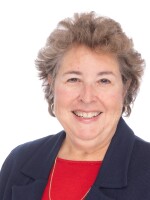Breaking Bad came out in January of 2008 – an intriguing story of Walter White, the high school chemistry teacher dying of lung cancer. Faced with huge medical bills, he partners with a student and uses his brilliant scientific mind to become a kingpin in the dangerous world of making and dealing meth. The show was hugely popular – lasting five seasons and catching the eye of UVA Professor William Little.
“I do teach a course on the western and I teach a course on gangster films, and as I arrived at the end of viewing this show, I realized that it has elements of both genres in it,” he explains.
One of his students was so enthralled by the course that he proposed a sequel based on the Breaking Bad prequel Better Call Saul. Professor Little thought that was a great idea and made senior Jacob Berton co-producer of the seminar.
“Of course I love Breaking Bad. It was my reason for joining the class in the first place," he says. "The readings were about things that are always around us that we might not be seeing or observing, and it really opened my eyes to my place in the world. The show was just sort of a vehicle to understand.”
The readings include a book titled A Social History of Swimming Pools in America – the pool being a prominent feature of Walter White’s home. And for the prequel, in which a central character claims a severe allergy to electro-magnetic waves, a book called Electric Light: An Architectural History.
“In Better Call Saul, it’s very much about our engagement with different forms of technology – whether it’s an audio recording device or a television or a video or the telephone," Little says. "So much of Better Call Saul is about complicated interactions with the telephone. Better Call Saul! Right? It’s in the title!”
About a hundred students applied to take part in Better Call Saul, but the course is a senior seminar where every student is encouraged to join the conversation, so participation is limited to 30. One of those who got in was Kaukab Rizbi, a computer science major who liked the timely nature of this tale.
“I’ve taken some political theory classes and philosophy courses, but that all seems like way back when. This is commentary about today – discussing the impact of technology. We had a whole class about the light switch and its significance.”
Rizbi, Micha Cerynik and William Little himself say Breaking Bad and Better Call Saul are rich resources for studying culture.
“We’re basically drawing on themes from linguistics, religious studies, media studies, history, philosophy, sociology – all these different fields are intertwined into this one course," the students explain. "That’s what makes it so exciting," Little adds. "They can come at this show from multiple angles and perspectives.”
Little believes the writing for both shows is superb, and while Breaking Bad has an amazing plot, the visuals in Better Call Saul are groundbreaking.
“It does these things that are just stunning with respect to color and black and white film and lighting and framing, and it’s just a beautiful show. I think it’s really an important work of art. I feel the same about Breaking Bad. I think they are two of the more important American popular cultural works of art in the 21st century.”
And the students give this course rave reviews – among them Nicole, who asked that we not use her last name. She loved the shows and has gained new courage through her conversations with classmates and Professors Little.
“He has helped me build my confidence as a writer and helped me find my voice speaking in class, because speaking up in class has always been a problem for me. I also didn’t come into UVA thinking about being a media studies major, but after last semester Professor Little said, ‘I really think you are a media studies major and just don’t know it.’”
Now she, Little and other series fans are looking forward to Vince Gilligan’s next creative effort – and perhaps a subject for the next great college course – an unnamed series starring actress Rhea Seehorn, who played Kim in Better Call Saul. At least eight networks and platforms considered the pitch, and there were multiple rounds of bidding for the project, which is said to have a budget of $13 to $15 million an episode. It will debut on Apple TV in September.


